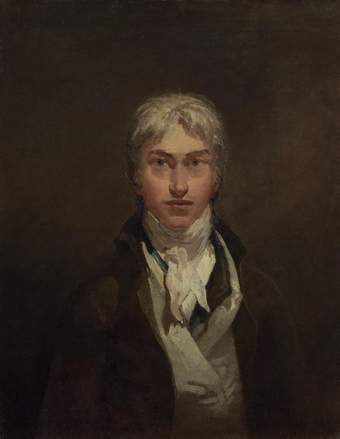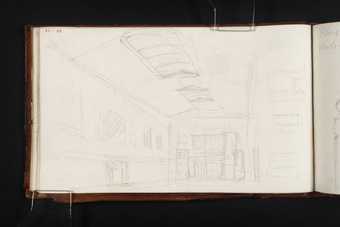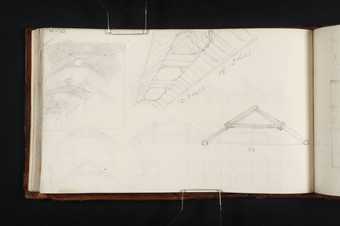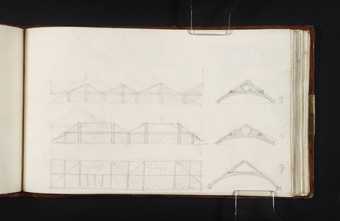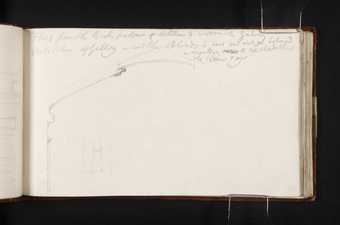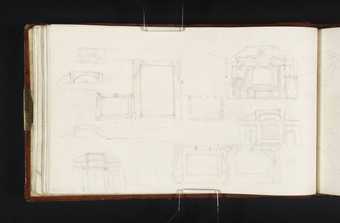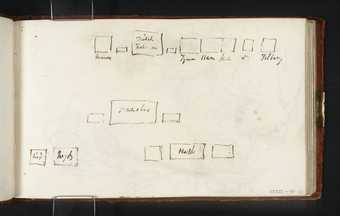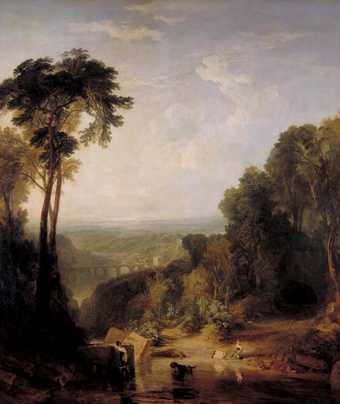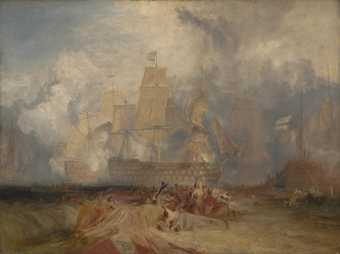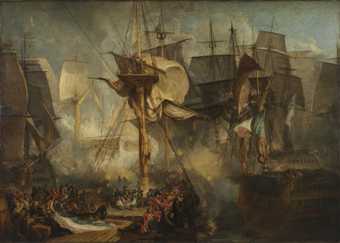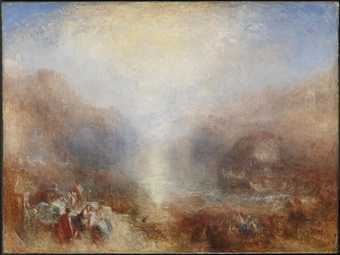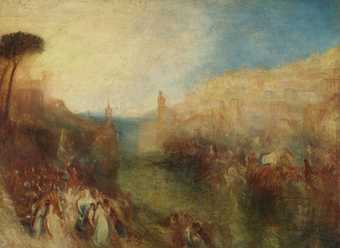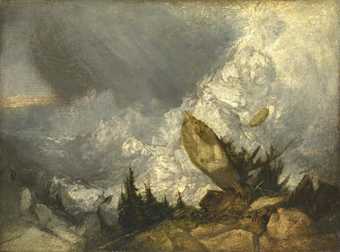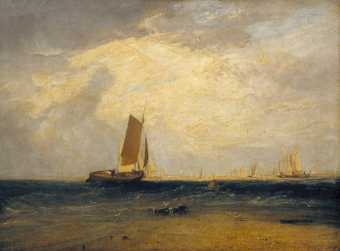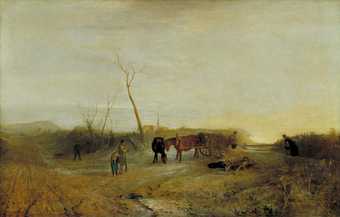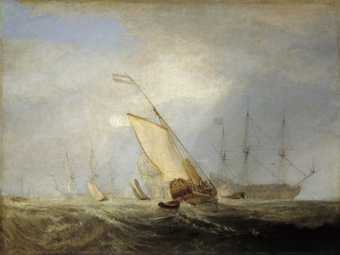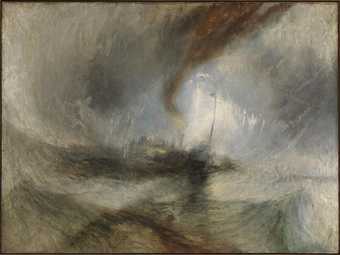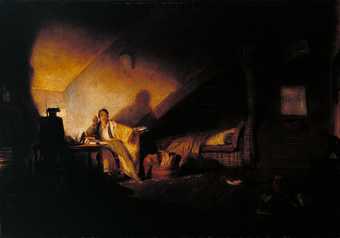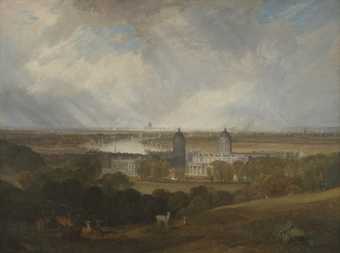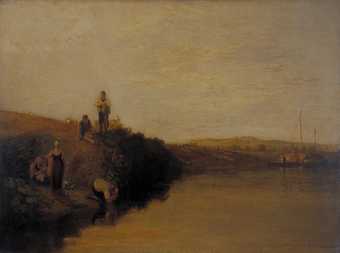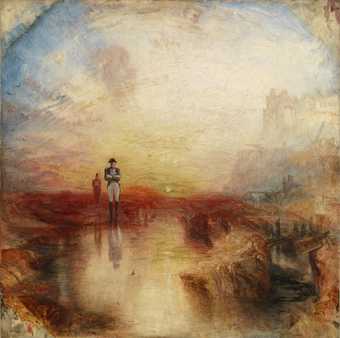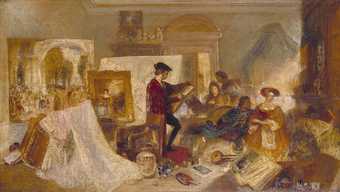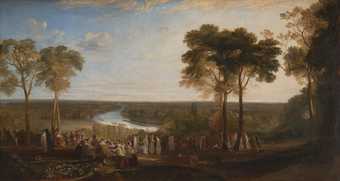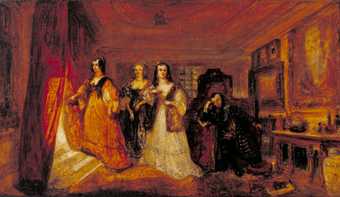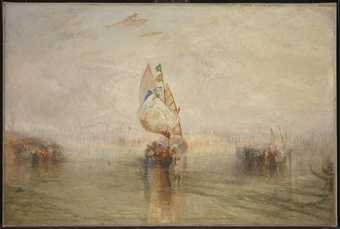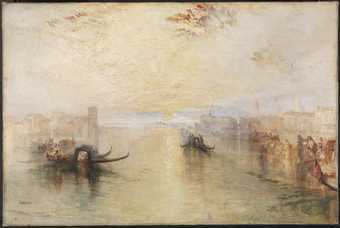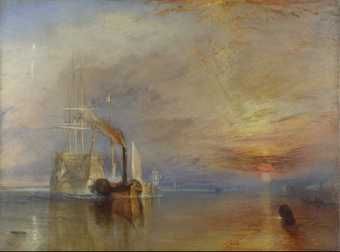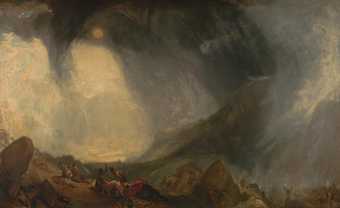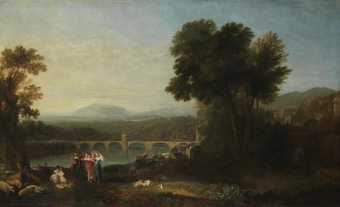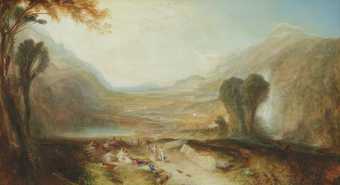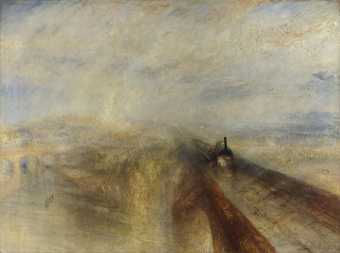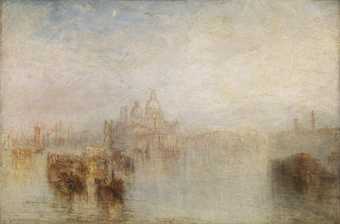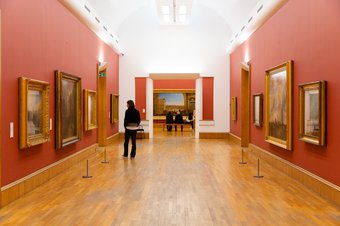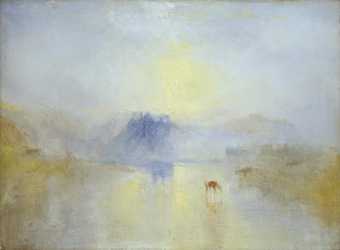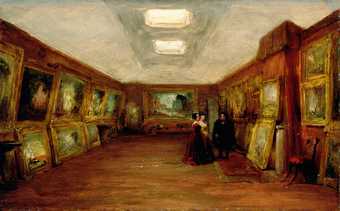
George Jones
Interior of Turner’s Gallery c.1852
Oil on panel
14 x 23 cm
Courtesy the Ashmolean Museum, Oxford
Introduction
J.M.W Turner is an artist best known for his atmospheric paintings of landscapes. But he had another less known talent. He created bespoke galleries specially designed to display his paintings. In 1822 Turner opened a gallery behind his West End House. The painting above by George Jones shows us what it looked like. Every aspect of the gallery – from its heating and lighting to the arrangement of paintings on its walls – was carefully planned by Turner.
What inspired him to open a gallery?
Like many artists, Turner wanted to have more control over how his paintings were seen. In the early 19th century, the main opportunity that artists had to show their work was at the Royal Academy Summer exhibitions. These were very overcrowded with artworks crammed together on the walls. Turner realised that to show his work so people could see it at its best, and to promote it to potential buyers, he needed a dedicated space to show them. In 1804 he converted some outbuildings attached to his house into a gallery. His house was on the corner of Harley Street and Queen Anne Street in London’s West End. The gallery had room to display up to around thirty artworks. Among the early exhibitions he put on in this makeshift gallery, was a display of his spectacular watercolours based on sketches he had made during a tour of France and Switzerland in 1802.
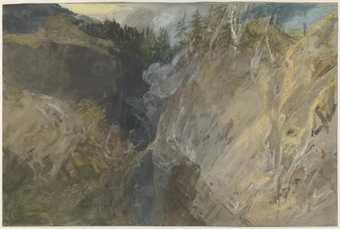
Joseph Mallord William Turner
A Ravine in the Pass of St Gotthard
(1802)
Tate
His gallery project was a great success. Crowds of wealthy and distinguished people visited his exhibitions – including enthusiastic buyers. One of the visitors, art collector Sir John Leicester, was planning his own gallery at Tabley, his country house in Cheshire to show his art collection. He asked Turner to help him with the design of his gallery. Turner sketched various plans for the gallery design, and arrangement of paintings in his sketchbook.
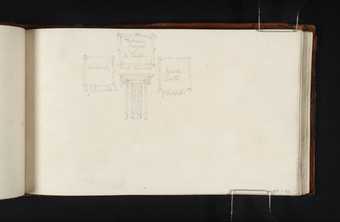
Joseph Mallord William Turner
Plan of a Picture-Hang in the Picture Gallery at Tabley House
(1808)
Tate
A hands-on designer
In 1818, encouraged by the success of his gallery design projects, Turner began to plan a new purpose-built gallery behind his house. His sketches show us that he took a very hands-on approach to its design. There are sketches for the structure of the space (its walls, doors and ceilings); as well as designs for features such as heating, lighting and moulding. The sloped ceiling and glass skylights that we see in George Jones's view of the gallery, can be clearly seen in Turner's sketches. His sketches also include some rather elaborate (and expensive) plans for draped fabric to frame pictures and shield them from bright light. But Turner (who was rather penny-pinching), used the cheaper option of herring nets stretched across the ceiling skylights to filter the daylight.
Take a tour
Measuring around 5.8 metres long by 4.5 metres wide (19 x 15 feet), with red walls, a fireplace and a central skylight; visitors came into the gallery through a door at one end of the room. They would have seen the natural light from above softened by the nets covered with tissue paper and hung across the ceiling. These images show a recreated impression of the gallery based on George Jones's views.
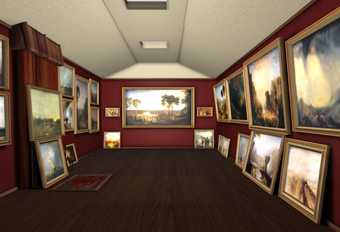
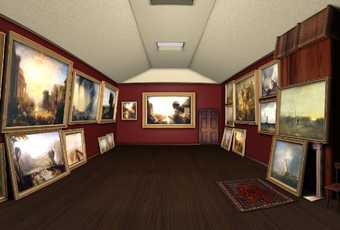
Explore the paintings on display
As well as designing the space Turner also curated it, selecting and arranging paintings on the walls (and on the floor!). Take a tour of the exhibition and see the paintings Turner chose to display.
Wall 1 – on the left as you enter the gallery
Wall 2 – on the end wall opposite the door
Wall 3 – on the right as you enter the gallery
Wall 4 – by the door, see them as you head out!
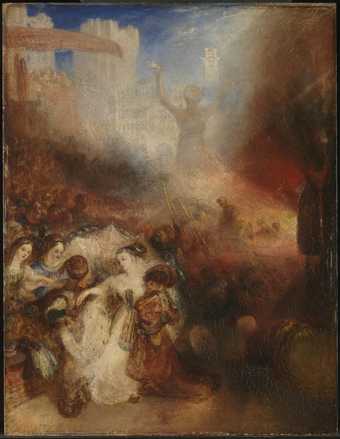
Joseph Mallord William Turner
Shadrach, Meshach and Abednego in the Burning Fiery Furnace
(exhibited 1832)
Tate
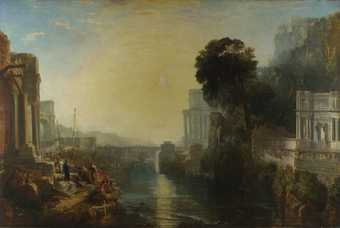
Joseph Mallord William Turner
Dido building Carthage, or The Rise of the Carthaginian Empire 1815
© The National Gallery, London
Recreating Turner's gallery for the big screen
Join film director Mike Leigh and and actor Timothy Spall for a behind-the-scenes look at how they brought Turner to life and set about recreating his Queen Anne Street Gallery for the 2014 film Mr Turner.
This film file is broken and is being removed. Sorry for any inconvenience this causes.
Turner's gallery now
As well as taking control of how his paintings were seen during his lifetime, Turner also took steps to control their future display. In doing so he also made sure that his name and his reputation as a great artist would be preserved in the future. In his will he left the contents of his gallery and studio to the British nation. His hope was that a memorial gallery would be built in his honour and that these paintings would be displayed there. Turner also requested that two of his paintings, Dido Building Carthage and Sun rising through Vapour: Fishermen cleaning and selling Fish, should hang in the National Gallery beside the work of the Old Master painter he most admired: Claude Lorrain (1604/5–1682). These two paintings and seven other pictures have remained in the National Gallery Collection. The rest of Turner’s gift of paintings and sketchbooks is now at Tate and many are on display in the Clore Gallery.

